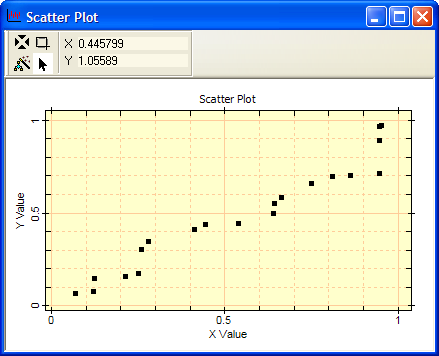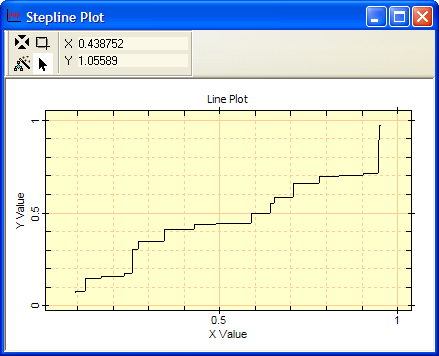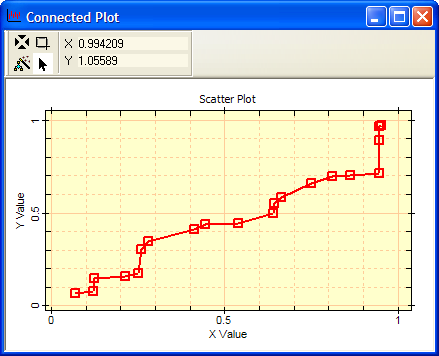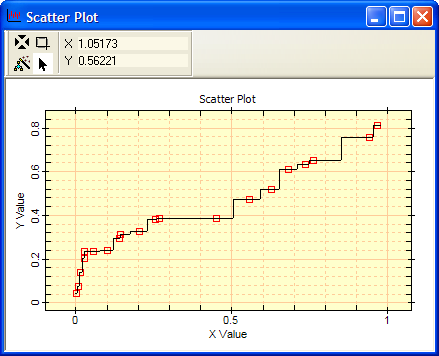
Comparison of Global Plotting Functions
The global plotting functions use the CPlotView class to expedite plotting data arrays when you do not need to make specialized or complex changes to the plot appearance. These 4 functions include Plot, PlotConnect, PlotLine, and PlotStep. The pictures below were made using the same arrays of 20 random x and y values. Before plotting, the arrays were sorted using the TSort function so that the random values would increase monatonically.




The plot symbols and attributes can be changed after plotting using Mira plotting commands. For example, the PlotConnect from above was changed using the Series Attributes command to use red color, thicker lines, and larger markers that are not filled:

To get hybrid plots that merge two or more types, you can run one plotting function and then another on the same data. Then use Mira's Ctrl+C and Ctrl+V (edit > copy and edit > paste) commands to copy and paste one or more plots (one at a time) onto one chosen as the "master" plot. The individual plots are shown together by switching to Overlay mode. Using a different data set, this technique was used to combine PlotStep and Plot results to make the following hybrid plot:

Notice that the stepped line always changes y value at the x coordinate exactly midway between points. One application of this might be to create error bars on stepped line plots as the PlotStep command does not accept ewrror bars. To do that, overplot a stepped line plot onto a scatter plot having error bars, then use Mira's Series Attributes command to change the scatter plot's marker to points.